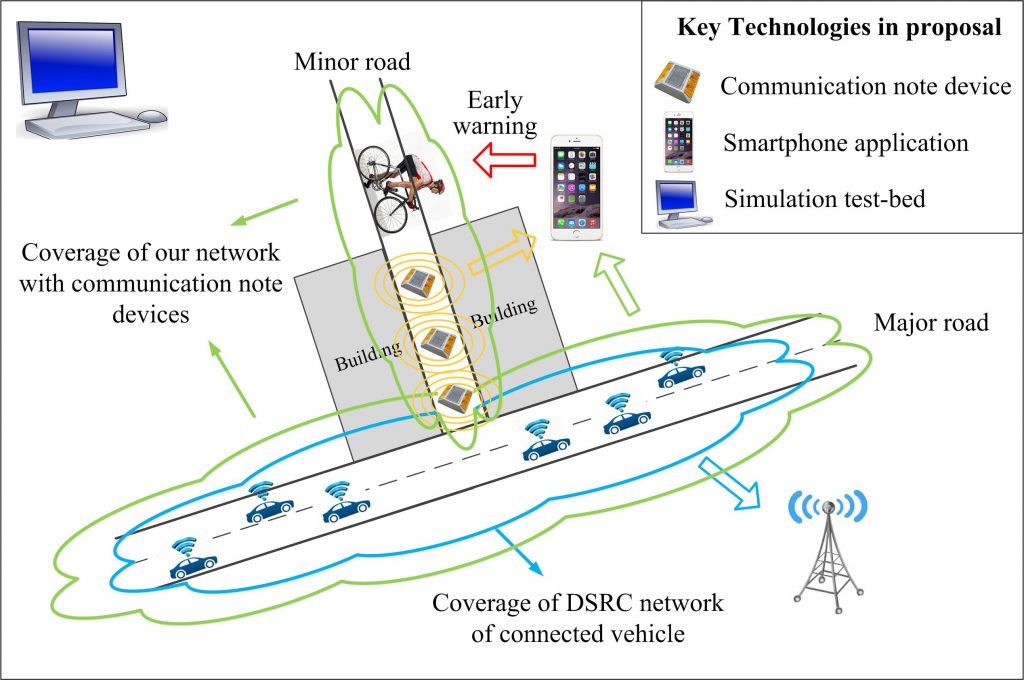Enhancing Safe Traffic Operations Using Connected Vehicles Data and Technologies
PI: Yinhai Wang (UW), yinhai@uw.edu
Dates: 12/16/2015-12/15/2016
Status: Completed
Project Information
Final Technical Report
The ultimate goal of the proposed research is to use connected vehicles (CVs) data and technologies to improve traffic safety on mixed-use roadway networks (e.g., freeways and intersections). This goal is relevant to all three themes of PacTrans, namely Technological Impacts on Safety, safe travel on mixed-use roads, and Performance Evaluation of Safety Projects.
To achieve this goal, the research team has identified four objectives:
1) Develop a cost-effective communication note (CN) device that is capable of communicating with connected vehicles via Dedicated Short Range Communications (DSRC) and with pedestrians, bicyclists, and unconnected vehicle through cell phones and other mobile devices via Bluetooth, WiFi, or other suitable communication protocols. Such CN devices can serve both as notes of the CV system and as data access and dissemination points for certified mobile devices, including cell phones, tablet personal computers, and laptop computers. These CN devices can set up ad hoc networks that extends the detection to desired locations as illustrated by Figure 1. By placing and properly using such CN devices in the collision-prone locations, traffic safety for all kinds of road users can be significantly improved.
2) Develop a mobile application (app) that allows pedestrians, bicyclists, and drivers of unconnected vehicles to communicate with the CN device and vice versa. Considering the popularity of Android phones and other mobile devices, the mobile app to be developed in this study will be based on the Android system. As a result, the app will allow collecting data on systems users’ location, speed, etc. and sending them appropriate warning messages in response to a particular unsafe scenario.
3) Develop an algorithm to identify unsafe conditions and determine appropriate CV based safety countermeasures (a.k.a. CV safety application) to be presented to system users. In other words, the team will determine what kind of message to be shown to which system users under a specific hazardous scenario.
4) Develop a connected vehicle simulation test-bed to evaluate the safety benefits of the proposed methodology under various traffic and landscape conditions. The CN device system will be implemented in the CV test corridors for the Washington State Department of Transportation (WSDOT). Field observations offers the data needed to calibrate the simulation test-bed.
The expected outcomes of the proposed research include an innovative technology to combine personal mobile devices to the CV system and a new mechanism with its mobile implementation to identify and inform different road users about unsafe conditions on a roadway network. Both are important in enhancing safe traffic operations and travel on mixed-use roadways. Additionally, successful completion of the project will add to the body of knowledge for future evaluation of CV technologies and applications.



